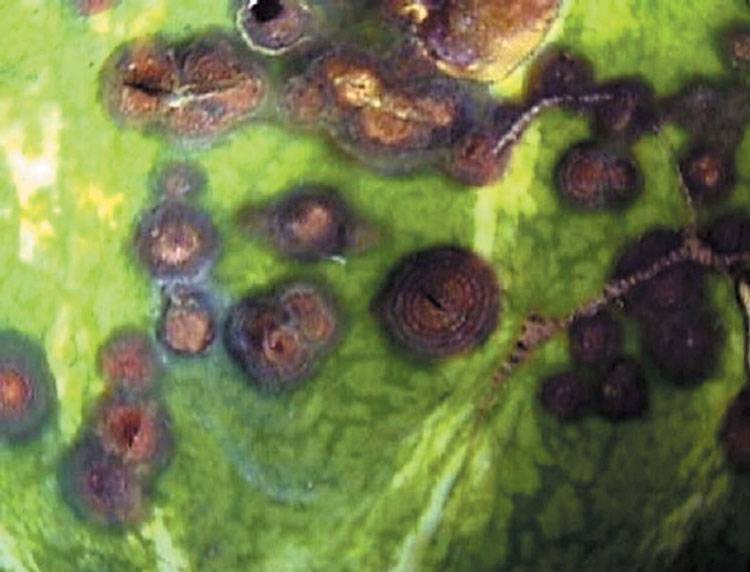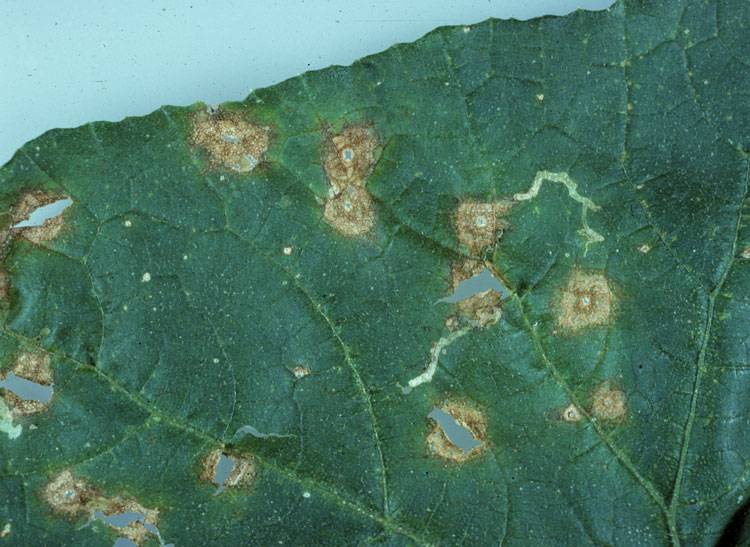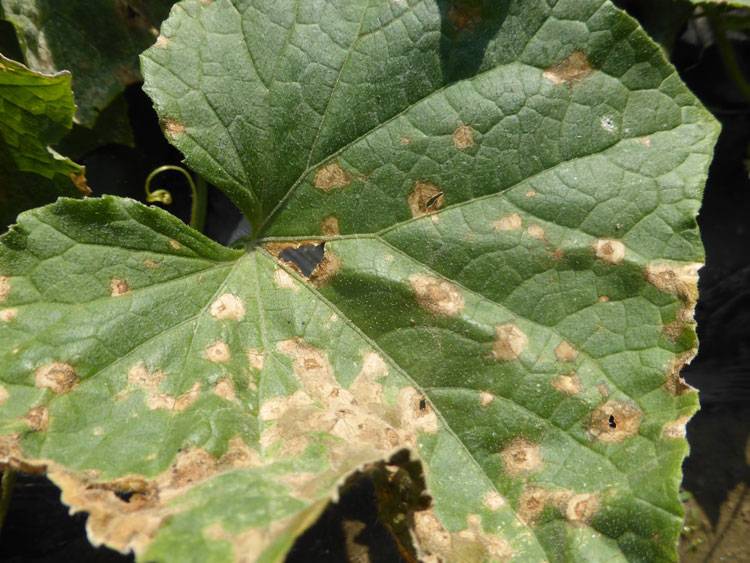Sponge gourd
Anthracnose

Colletotrichum orbiculare
Fungal Disease

Colletotrichum orbiculare
Fungal Disease

Colletotrichum orbiculare
Fungal Disease

Colletotrichum orbiculare
Fungal Disease
Introduction
Anthracnose is a destructive fungal disease caused by Colletotrichum orbiculare, affecting cucurbits such as cantaloupe, cucumber, and watermelon. The disease thrives in warm, humid conditions and spreads rapidly under rainy and wet weather.
Symptoms of Anthracnose
- Leaf Spots:
- Water-soaked spots that turn tan or dark brown.
- Spots may coalesce into large blighted areas.
- Stem Lesions:
- Elongated, sunken lesions that can girdle the stem, causing vine wilt.
- Fruit Lesions:
- Circular, sunken lesions that appear dark green to black.
- May contain pinkish spore masses in humid conditions.
- Seedlings:
- Wilt of cotyledons and stem lesions near the soil line.
- Young Fruit:
- May turn black and die if their pedicels (fruit stalks) are infected.
- Older Fruit:
- Develop circular, noticeably sunken, dark-green to black lesions.
Favorable Conditions for Disease Development
- Temperature:
- Most active between 18–27°C.
- Optimum infection temperature: 21–24°C.
- Disease severity increases at 26–32°C with high moisture.
- Humidity & Moisture:
- High humidity promotes rapid disease spread.
- Extended leaf wetness (as little as 2 hours) can trigger infection.
- Heavy rain and dew create ideal conditions for the pathogen.
Disease Cycle & Spread
- Survival & Transmission:
- Fungus survives in infected plant debris and can be seed-borne.
- Spores spread via wind, rain, machinery, and human handling.
- Canopy Effect:
- Dense plant canopies trap moisture, creating a humid microclimate that accelerates disease spread.
- Pathogen Races:
- Race 1: Affects cucumber and muskmelon.
- Race 2: Affects watermelon (no resistant commercial cultivars available).
Management Strategies
- Cultural Control:
- Use disease-free seeds and resistant cultivars (for Race 1).
- Rotate crops to prevent pathogen buildup in the soil.
- Destroy infected plant debris to reduce fungal survival.
- Avoid working in fields when plants are wet to minimize spread.
- Chemical Control:
- Fungicides can help prevent disease progression when applied before symptoms appear.
Conclusion
Anthracnose is a moisture-driven disease, thriving in warm temperatures and prolonged wet conditions. A combination of crop rotation, resistant cultivars, and fungicide applications is crucial for minimizing disease impact and protecting yields.




